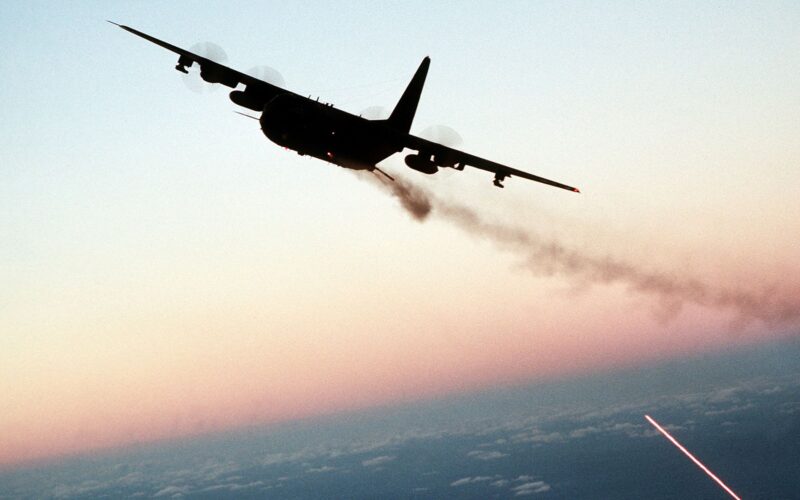A Telegram channel associated with Russian private military company (PMC) Wagner published a detailed description of coming under the fire of US combat aircraft in the Deir ez-Zor Governorate of Syria in 2018.
While Wagner previously admitted suffering large casualties from the airstrikes, this is the first detailed description of the battle published by a media outlet linked with the PMC.
The description was posted by Grey Zone, a Telegram channel which describes itself as a “mercenary community” and is often credited as being an unofficial outlet of Wagner.
The post, titled “The Red February,” commemorates the anniversary of the event, which happened on February 8, 2018.
‘No support’
According to the post, at the time Wagner, together with Syrian pro-government forces, was pushing ISIS out of Deir ez-Zor province and received an order to capture Conoco oil refinery.
However, the refinery was already captured by Kurdish and US soldiers. Despite that, a large attack force was assembled, supported by Russian Air Defense and Aerospace forces. On the night between February 7 and 8 the force moved to attack the refinery, the post claims.
“Suddenly incoming [rounds] hit the column of the 5th attack detachment, and nobody understands where they came from,” Grey Zone writes. “In a classic move, the enemy closed the column by destroying the first and the last vehicles.”
The post claims the attack was conducted by MQ-9 Reaper drones. A few moments later, several AH-64 Apache helicopters came and started attacking the soldiers who tried to retreat, launching missiles and firing autocannons.
Meanwhile, at least one F-16 fighter jet [described by Grey Zone as a bomber – ed. note] attacked the soldiers who were hiding between nearby buildings, followed up by fire from an AC-130 gunship with its fire “turning buildings into dust.”
“The guys from the “Carpatian” detachment [one of the detachments of Wagner forces in Syria – ed. note] will later say that in the morning, solidified melted sand and gun barrels crooked from the heat could be found,” the post said.
Wagner vehicles that escaped the carnage were continuously hit by some other ordnance, according to Grey Zone, while sporadic attacks by F-16s continued well into the morning.
“No [air] support was provided [to Wagner]. Even though aircraft of the [Russian] Aerospace Forces were ready several kilometers away, at the Deir ez-Zor airbase. They say, a couple of pilots tried to get an approval for take-off, but were refused. Whether it is true or not [we don’t know], but there are rumors about that,” Grey Zone states.
The post concludes with the channel claiming that the casualties of the PMC personnel were immense, although smaller than 600 or 200, as some reports claim.
Reports and denials
The description, posted by Grey Zone, seems to be compiled from previously-released sources, including the surviving Wagner personnel who spoke on the issue.
A detailed account of the battle was included in “8 years with Wagner”, a book by a member of the PMC, Kiril Romanovsky, published several days prior. Its description of the clash near Khasham was reposted by Grey Zone in subsequent posts.
Both this and other memoirs are largely in line with the accounts of the battle presented in Western sources.
According to a briefing by Jeffrey Harrigian, commander of the US Air Forces Central Command, published by the US Department of Defense, a “hostile force” launched an attack on a Syrian Democratic Forces (SDF) position.
“We immediately contacted the Russian officials on the deconfliction telephone line to alert them to the unprovoked attack on a known SDF and coalition position,” Harrigian said. “After these calls, coalition officials approved strikes to destroy hostile forces.”
USAF joint terminal attack controllers, present on the ground, called in artillery bombardment and airstrikes that continued for three hours and involved MQ-9 Reaper drones, F-15E Strike Eagle fighter jets, AC-130 gunships and AH-64 Apache helicopters.
Shortly after the battle, The New York Times published another detailed account, based on sources within the US military. According to the report, as the combined force of Syrian and Wagner soldiers moved on the SDF position, embedded US commandos intercepted Russian radio chatter among the attacking soldiers.
Russian military officials were immediately contacted through a deconfliction line. They repeatedly denied that the attack involves Russian forces, after which the airstrikes were called in.
According to The New York Times, between 200 and 300 attacking soldiers were killed, a large part of them presumably being Wagner personnel.
While the attack and particularly the losses received widespread attention within Russia, including calls for parliamentary investigation, the country’s officials denied any claims that Russian forces were involved. Shortly after the battle, Dmitry Peskov, the press secretary of Russian president Vladimir Putin, said he has “no information” about any losses of Russian citizens near Khasham, calling the reports about the battle “misinformation.”

